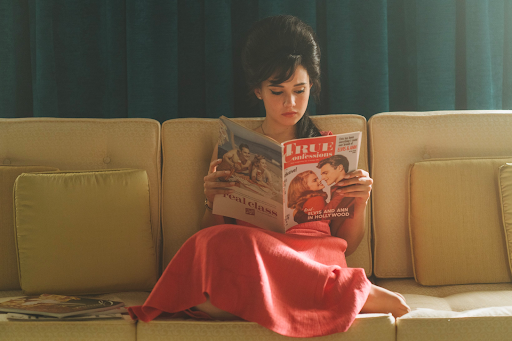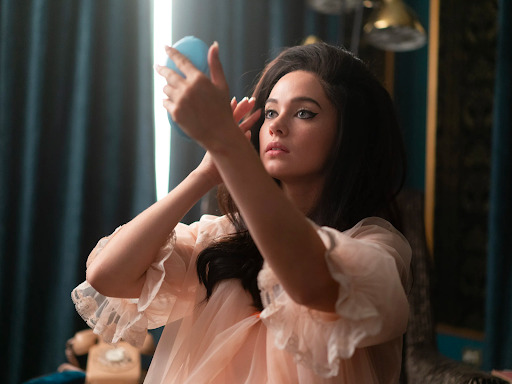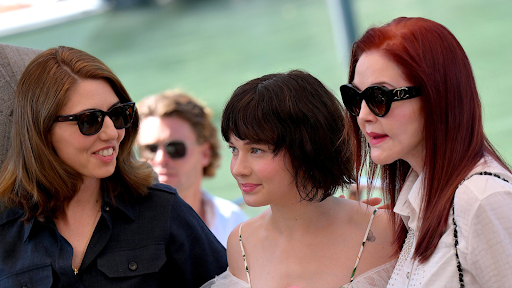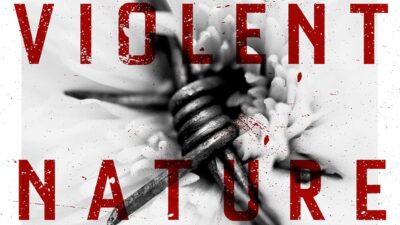In 1959, when Priscilla Beaulieu met Elvis Presley in West Germany, he was already a world-famous celebrity. Elvis was stationed there during his military service, as was Priscilla’s father, Air Force officer Paul Beaulieu. Priscilla got to live every teenage girl’s fantasy; Elvis Presley swept her off her feet, away from her humdrum schoolgirl life, into a rockstar’s world. Overnight, Priscilla became the “rockstar girlfriend” blueprint. Of course, this all came with its eventual complications.
Elvis quickly became Priscilla’s whole world—“husband, father, and very nearly God,” as she wrote in her 1985 autobiography Elvis and Me, the basis for PRISCILLA—and who could blame her? Who could focus on studying for a math test when Elvis Presley is your boyfriend, waiting downstairs to give you a private performance? Only having known her for a few months, Elvis began entrusting Priscilla with his secrets, his frustrations, his acting aspirations, his unprocessed grief at the loss of his beloved mother, Gladys; it became her job to make him smile when he was down, to be there for him no matter what.
This was a lot for a 14-year-old girl to take on so suddenly. In private moments, Elvis was her closest confidante, and she his. Despite the caricatures, Elvis proved to be a sensitive, baby-talking lover (this sensitive interiority in PRISCILLA is what separates Jacob Elordi’s Elvis from the ones we’ve seen previously). Although they became so close so quickly, with her moving into Graceland while finishing high school a few years later, Elvis still kept his “Cilla” at a distance. At first, Elvis’ lifestyle, and her role as a supportive muse within that framework, was intoxicating, but with so many people hanging around for a piece of Elvis, Priscilla’s perfect dream life brimmed over with loneliness. She was only allowed short visits while he was in Hollywood shooting films—which was often—at his insistence. This led to doubts about his fidelity, with reporters rapidly documenting his juicy relationships with Hollywood starlets on (and off) set.

In Baz Luhrmann’s rendition of the story, Olivia DeJonge’s Priscilla has only a handful of lines in the three-hour-long film. The real Priscilla Presley herself put Elvis at the forefront of her own story, having titled her book Elvis and Me, whereas Sofia Coppola placed Priscilla’s name at the front. Elvis’ entourage may have ignored Priscilla’s glaring young age when she met him, the ferocity of her determination to turn herself into the ideal woman, and later, her growth into her own woman, but these are Coppola’s points of interest. In its depiction of a highly publicized, beautiful, fashionable young woman’s isolated loneliness in an ivory tower, and the dysfunctional marriage at the center of her life, PRISCILLA is the spiritual sequel of MARIE ANTOINETTE, in both content and form. Priscilla and Marie Antoinette were both very young when royal responsibilities were thrust upon them; very young when they were introduced to the lifestyles of the rich and famous; very young when they were held as beautiful, adolescent hostages playing dress-up in a glittering cage. Priscilla and Elvis may have had a notably more electric romantic connection than their royal French counterparts, but their fiery passion only made their disagreements all the stormier.
Once again, Sofia Coppola has created a portrait of the frustrating loneliness of teenage girlhood through her specific style of costume and production design. Yes, PRISCILLA is the true story of an American princess from her perspective, but it’s also very much a Sofia Coppola romantic drama. Clothing tells the story of Priscilla’s development from innocent schoolgirl, to ‘60s Hollywood siren, into a woman of her own making. Sweaters, skirts, sweet dresses, and, of course, her Catholic schoolgirl uniform are swapped out to run with Elvis’ crowd—and to please him. Elvis dressed Cilla up as his doll, taking her on shopping sprees to make this child look older, more sophisticated.
Elvis’ own descent into pill-popping madness is shown without ever having to be directly commented on. Although she was queen of the house, Priscilla was always more of a guest at Graceland than an actual resident, even after giving birth to Elvis’ sole heiress. By now, you may have gathered that he controlled every aesthetic detail of his life, and the design of Graceland was no different. It’s easy to see the King’s mental decline reflected in real photos of his bedroom: innocent creams and whites turn to debaucherous reds and golds. All production designer Tamara Deverell had to do was follow the clues to his demise, and she should be commended for doing so on such a tight budget.

There is not one Elvis song in PRISCILLA. Instead, Coppola has developed another one of her usual soundscapes that blends modern synthpop with ’60s and ’70s rock. Many will be quick to chalk the lack of Elvis songs up to the film’s low budget, or lack of permission from his estate, but that music is already ubiquitous—why light a bunch of money on fire just so the audience can hear an impersonator perform “Suspicious Minds” for the 10 billionth time? What was Priscilla listening to? What would she listen to were she a teenage girl in the 2020s? Stopping just short of including the practically Priscilla-imitating Lana Del Rey (I just know Priscilla would have been blasting “Blue Banisters” during her divorce), Coppola includes similarly moody yet tender modern day artists, like Porches and Phoenix (fronted by Coppola’s own hubby). PRISCILLA’s opening song is the 1980 Ramones cover of the The Ronettes’ “Baby, I Love You,” a schmaltzy cover Phil Spector famously forced the rockers to record at gunpoint, wanting to relive his glory days as a music producer; it’s as succinct of a metaphor as any.
It’s easy to witness Priscilla’s story and think “Girl, you’re a victim!” but, for her, it’s more complicated than that. It’s more difficult, but perhaps more honest, to come to terms with both a girl who was groomed by a powerful man 10 years her senior and as a woman with a conflicted heart—in love with a doomed man and desperate to become her own person at the same time. No longer the innocent schoolgirl Elvis met in 1959, Priscilla learned how to operate under the manipulative framework Elvis built, learned how to make it work for her, even after he started throwing chairs and sleeping around. Elvis sought to control her as he lost control over his own life—Priscilla saw his struggle, and wanted to help him, until she realized Elvis’ meteoric destruction would end her life, and her daughter’s, too. This transformation may seem quiet, but it’s there, and eventually led to a departure from life on the hill, as they once called it. There’s a scene where Elvis picks a volatile fight with a pregnant Priscilla, threatening to kick her out. As a young girl, she would have kicked and screamed, longing for her beau’s affection. “Just tell me when to leave,” adult Priscilla coolly replies, not falling for his manipulative bullshit anymore, knowing that neither his tender embrace nor his harsh words can affect her any longer.

My only gripe with PRISCILLA is that, unlike Luhrmann’s ELVIS, it is not three hours long. Priscilla’s book is full of fascinating stories from her life, ranging from the beautiful to the macabre—including one about Elvis taking her to the Memphis morgue to impress upon her “the realities of life”—and only a handful are used in the film. These seemingly throwaway narrative asides demonstrate the strength of Priscilla’s devotion to Elvis and the gutting depth of her loneliness as a consequence of that devotion. The blame lies with the studio, not the filmmaker. A filmmaker with the last name “Coppola” and two decades of successful filmmaking under her belt could barely get funding for her new film with a slam dunk subject that has already proven to be popular—is this another nail in cinema’s coffin, or is this another example of rampant sexism when it comes to who gets funded in the film industry? Coppola famously considered raffling a game of pickleball with star Jacob Elordi to raise more money; it might be a silly image we can all giggle at, but it’s a real shame the thought ever had to cross her mind.
Earlier this year, A24 released their most expensive film to date, BEAU IS AFRAID, Ari Aster’s three-hour-long passion project with a budget of $35 million and a box office return of $8 million. I don’t live under a rock, I’m aware that Aster has made two of A24’s most financially successful films, HEREDITARY and MIDSOMMAR, but it’s a shame that Coppola was forced to curtail her vision under $20 million while Aster was given carte blanche to make whatever he wished. The last film Coppola released, ON THE ROCKS, may not have been a smash commercial hit for A24, but it should be noted that the Rashida Jones and Bill Murray vehicle was produced specifically for streaming under a multi-picture deal with Apple TV, so traditional box office numbers were never the focus of that project. Although A24 has recently come out in favor of throwing cash at more commercial films, Coppola’s signature style is one that has a Hell of a lot of staying power in the zeitgeist. Bet on Sofia every time.
















Comments